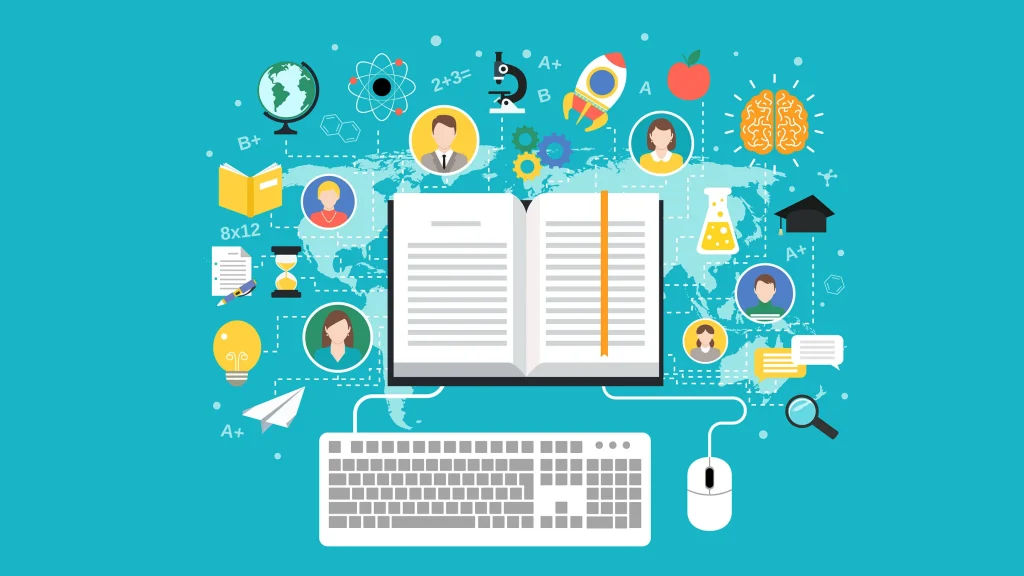In the ever-evolving landscape of education, teachers play a pivotal role in shaping the learning experiences of their students. To do this effectively, they must have access to a variety of educational resources that can enhance their teaching strategies, engage students, and foster a positive learning environment. From digital tools to traditional materials, the right resources can make a significant difference in the classroom.
This article highlights essential educational resources that every teacher should consider incorporating into their teaching practice.
Essential Educational Resources for Teachers

-
Online Learning Platforms:
- Khan Academy: Offers a wide range of free resources, including instructional videos and practice exercises across various subjects.
- Edmodo: A social learning platform that facilitates communication between teachers, students, and parents, allowing for resource sharing and collaboration.
-
Interactive Tools:
- Nearpod: An interactive presentation tool that allows teachers to create engaging lessons with quizzes, polls, and multimedia content.
- Padlet: A digital bulletin board where students can collaborate, share ideas, and showcase their work in real-time.
-
Assessment Tools:
- Google Forms: A versatile tool for creating surveys and quizzes that can provide instant feedback and data collection.
- Quizlet: A platform for creating flashcards and quizzes, helping students study and reinforce their learning through gamified assessments.
-
Educational Apps:
- Seesaw: A student-driven digital portfolio that allows students to document their learning and share it with teachers and families.
- Flipgrid: A video discussion that encourage student to express their thoughts and ideas through short video responses.
-
Resource Libraries:
- Teachers Pay Teachers: An online marketplace where educators can buy and sell original teaching resources, including lesson plans, activities, and classroom materials.
- Open Educational Resources (OER): A collection of free, openly licensed educational materials that teachers can use, adapt, and share.
-
Professional Development:
- Coursera and edX: Offer online courses from universities and organizations, allowing teachers to enhance their skills and knowledge in various educational topics.
- TeachThought: Provides articles, resources, and courses focused on innovative teaching strategies and educational best practices.
-
Classroom Management Tools:
- ClassDojo: A classroom management app that helps teachers communicate with students and parents while tracking student behavior and progress.
- Google Classroom: A platform that streamlines assignment distribution, grading, and communication between teachers and students.
-
Visual Aids and Multimedia:
- Canva: A graphic design tool that allows teachers to create visually appealing presentations, posters, and educational materials.
- YouTube Education: A curated collection of educational videos that cover a wide range of topics, providing visual and auditory learning opportunities.
Integrating Educational Resources into Teaching
- Identify Learning Objectives:
- Before selecting resources, clearly define your learning objectives. This will help you choose tools that align with your goals and enhance student understanding.
- Encourage Student Engagement:
- Utilize interactive tools like Nearpod and Padlet to foster collaboration and active participation among students. Engaged students are more likely to retain information and develop critical thinking skills.
- Incorporate Variety:
- Mix traditional teaching methods with digital tools to cater to different learning styles. Combining multimedia resources with hands-on activities can create a more dynamic learning environment.
- Utilize Data for Improvement:
- Use assessment tools like Google Forms and Quizlet to gather data on student performance. Analyze this data to identify areas for improvement and adjust your teaching strategies accordingly.
- Collaborate with Colleagues:
- Share resources and best practices with fellow educators. Collaborating can lead to new ideas and approaches that enhance the overall teaching experience.
Conclusion: Empowering Educators with Resources
Access to valuable educational resources is essential for teachers seeking to create engaging and effective learning environments. By leveraging a variety of tools and materials, educators can enhance their teaching strategies, support diverse learning needs, and foster student success.
As the educational landscape continues to evolve, staying informed about new resources and technologies is crucial. By embracing these valuable tools, teachers can empower themselves and their students, ultimately leading to a more enriching educational experience.
Read Also About Educational Travel offers students and adults alike the opportunity to learn about history, culture, geography, and language firsthand.

